Wonders of Our World #1: The Internal Combustion Engine
The I.C.E. takes the much awaited top spot in the wonders of our world list!
We've finally reached the apex of our journey through the modern wonders of our world. From the Grand Canal of China to the shipyards of South Korea, from the undersea cables that connect our digital world to the satellites that predict our weather, we've explored some truly remarkable feats of human engineering.
Some wonders protect the world we’ve already built, others open up entirely new dimensions of possibility.
But none have had quite the same impact on our world as my number one pick: the Internal Combustion Engine (I.C.E.).
The Birth of a Revolution
To truly appreciate the significance of the I.C.E., we need to delve into its origins and understand how it works. The story of the Internal Combustion Engine begins in the late 17th century with the invention of the first piston engine by Dutch physicist Christiaan Huygens. This early engine, designed in 1673, used gunpowder as its fuel source. While innovative, it was impractical for widespread use due to its explosive nature and lack of control.
The next significant step came in 1794 when Robert Street patented an engine that used liquid fuel (turpentine) with air in a cylinder, compressed and ignited. This was closer to our modern concept of the I.C.E., but it still lacked efficiency and reliability.
It wasn't until 1859 that the first true Internal Combustion Engine was patented by Belgian-born engineer Jean Joseph Étienne Lenoir. Lenoir's engine used electric spark ignition of a mixture of coal gas and air. It was double-acting, drawing gas and air into the cylinder in the first part of the stroke, then igniting the mixture and exhausting it in the second part. While revolutionary, it was inefficient, converting only about 5% of the fuel's energy into useful work.
The breakthrough came in 1876 when German engineer Nikolaus Otto developed the four-stroke cycle engine. This design, known as the Otto cycle, is still the basis for most gasoline engines today. Otto's engine doubled the efficiency of the Lenoir engine and set the stage for the modern I.C.E.
The Inner Workings of the I.C.E.
The genius of the Internal Combustion Engine lies in its ability to convert chemical energy into mechanical energy through a series of controlled explosions. Let's break down the four-stroke cycle that powers most I.C.E.s:
Intake Stroke: The piston moves down from the top dead center (TDC) to the bottom dead center (BDC) of the cylinder. This movement creates a vacuum that draws a mixture of fuel and air into the cylinder through the intake valve.
Compression Stroke: With both valves closed, the piston moves back up to TDC, compressing the fuel-air mixture. This compression raises the temperature of the mixture and makes the subsequent combustion more powerful. The compression ratio (the ratio of the volume of the cylinder at BDC to the volume at TDC) is a key factor in engine efficiency.
Power Stroke: Just before the piston reaches TDC on the compression stroke, the spark plug ignites the compressed mixture. The resulting explosion forces the piston down, generating power. This is the only stroke that produces power in the four-stroke cycle.
Exhaust Stroke: As the piston moves back up, the exhaust valve opens, and the piston pushes the spent gases out through the exhaust valve.
This cycle repeats thousands of times per minute in a running engine, with multiple cylinders firing in a carefully orchestrated sequence to provide smooth, continuous power. In a typical four-cylinder engine, for example, the firing order might be 1-3-4-2, with each cylinder at a different stage of the cycle at any given moment.
A Unique Approach to Power Generation
What sets the Internal Combustion Engine apart from other power generation methods is its direct harnessing of combustion energy. Most other large-scale power generation techniques - from steam engines to nuclear power plants - ultimately rely on heating water to produce steam, which then drives a turbine.
The I.C.E., in contrast, converts the chemical energy of fuel directly into mechanical energy. This allows for a compact, portable power source that can be scaled from small handheld devices to massive ship engines. The power-to-weight ratio of I.C.E.s is particularly impressive, which is why they've been so successful in transportation applications.
Consider, for example, a modern automotive engine. A typical 2.0-liter four-cylinder engine in a compact car might produce around 150 horsepower (about 110 kilowatts) and weigh about 300 pounds (136 kg). That's a power-to-weight ratio of about 0.8 kW/kg. In comparison, a typical steam turbine power plant might have a power-to-weight ratio of less than 0.1 kW/kg.
The fuels used by I.C.E.s are also much denser per unit of energy they contain compared to batteries, which makes them the go-to for moving energy sources around, like we do with automotive transport.
This efficiency and compactness come at a cost, however. I.C.E.s are less thermally efficient than large steam turbines, typically converting only about 20-35% of the fuel's energy into useful work (with the rest lost as heat), compared to up to 50% for large steam turbine plants. But for applications where size and weight matter more than absolute efficiency, the I.C.E. reigns supreme.
The I.C.E.'s Impact on the World
The advent of the Internal Combustion Engine reshaped our world in ways that are hard to overstate. Let's explore some of the key areas of impact:
Transportation Revolution
The most obvious impact of the I.C.E. was in transportation. The ability to have a powerful, compact engine revolutionized how we move:
Automobiles: The I.C.E. made personal transportation accessible to the masses. In 1886, Karl Benz patented the first gasoline-powered automobile, and by the early 20th century, Henry Ford's assembly line was producing affordable cars for the middle class. This democratization of transportation had profound effects on society. Cars transformed city planning, led to the development of suburbs, and changed social dynamics by increasing personal mobility.
Aviation: While the Wright brothers' first flight in 1903 used a custom-built I.C.E. producing just 12 horsepower, it was the development of more powerful and reliable engines that truly enabled the aviation industry to take off. By the 1930s, engines like the Rolls-Royce Merlin were producing over 1,000 horsepower, enabling long-distance flights and military applications that would change the course of history.
Shipping: Large diesel engines dramatically increased the speed and efficiency of cargo ships, accelerating global trade. The first diesel-powered ship, the MS Selandia, was launched in 1912. By the 1950s, diesel engines had largely replaced steam power in commercial shipping, enabling larger ships, faster travel times, and more efficient global trade networks.
Economic Transformation
The I.C.E. didn't just change how we move; it changed how we work:
Industrial Applications: Portable I.C.E.-powered generators and compressors allowed for mechanization in places far from established power grids. This was particularly important in construction, mining, and agriculture, enabling productivity increases in these sectors.
Agriculture: Tractors and other I.C.E.-powered farm equipment dramatically increased agricultural productivity. The first gasoline-powered tractor was built in 1892, and by the 1920s, tractors were rapidly replacing horses on American farms. This mechanization freed up labor for other sectors, contributing to rapid industrialization and urbanization.
New Industries: The automotive industry became a cornerstone of many national economies. In the U.S., it was the largest single manufacturing enterprise by the mid-20th century. In 1955, General Motors became the first company to earn over $1 billion in a single year, and the industry employed millions of workers directly and indirectly.
Urban Planning and Infrastructure
The widespread adoption of I.C.E.-powered vehicles necessitated massive changes in our built environment:
Road Networks: The interstate highway system in the U.S. and similar projects worldwide were direct responses to the proliferation of automobiles. The U.S. Interstate Highway System, initiated in 1956, eventually spanned over 48,000 miles and cost over $500 billion (in 2016 dollars), making it one of the largest public works projects in history.
Suburban Sprawl: The ability to commute longer distances led to the growth of suburbs, fundamentally changing patterns of urban development and allowing for much of our current standard of living to be accessible to the masses. Between 1950 and 2000, the proportion of Americans living in suburbs grew from 23% to 50%.
Oil Infrastructure: The I.C.E.'s thirst for fuel led to the development of a global network of oil extraction, refining, and distribution infrastructure. By 2019, there were over 700 oil refineries worldwide, processing about 100 million barrels of oil per day.
Geopolitical Shifts
The I.C.E.'s dependence on oil has had profound geopolitical consequences:
Oil Diplomacy: Nations with large oil reserves gained significant geopolitical leverage. The formation of OPEC in 1960 and the oil crises of the 1970s demonstrated the power of oil-producing nations to influence global politics and economics.
Conflicts: Many 20th and 21st century conflicts have been influenced by the desire to control oil resources. The invasion of Kuwait by Iraq in 1990 and the subsequent Gulf War is a prime example.
Economic Interdependence: The global oil trade has created complex economic relationships between nations. For example, despite political tensions, the U.S. imported billions of dollars worth of oil from Venezuela for decades, demonstrating how oil dependence can supersede political differences.
The Dark Side of the Revolution
While the Internal Combustion Engine brought unprecedented mobility and economic growth, it also introduced new challenges:
Air Pollution: I.C.E. emissions are a major contributor to urban air pollution, leading to significant public health issues. The World Health Organization estimates that outdoor air pollution causes 4.2 million premature deaths each year, with vehicle emissions being a major factor.
Climate Change: The massive scale of I.C.E. use has made it a primary driver of anthropogenic climate change. Transportation accounts for about 14% of global greenhouse gas emissions, with road vehicles being the largest contributor.
Mechanized warfare: The I.C.E. is a tool like any other, and in the hands of humanity (at least in the 20th century) any tool doubled as a weapon. Personally I think the balance puts the I.C.E. solidly in the net positive bucket, but the advent of modern warfare cannot be dismissed as part of it’s story.
A View from 2300
To truly appreciate the long-term impact of the Internal Combustion Engine, let's take a leap forward in time. Imagine we're in the year 2300, looking back on the past three centuries of human history. Let's listen in on a conversation between two future anthropologists as they debate the significance of the I.C.E.
Historical Dialogue: The Legacy of the Internal Combustion Engine
The holo-projection flickered to life, revealing two figures in the minimalist attire typical of 24th-century academics. Dr. Aria Chen, her dark hair streaked with iridescent highlights, faced Professor Zain Al-Rashid across a virtual recreation of an ancient library. The air around them shimmered with data streams, holographic charts, and 3D models of various engine designs throughout history.
Dr. Chen, a renowned anthropologist specializing in the study of human-technology interactions, was in the midst of preparing a landmark presentation on the defining inventions of the Anthropocene. Her colleague, Professor Al-Rashid, an expert in the socio-economic impacts of historical technologies, had been invited to challenge her assertions and help refine her arguments.
Chen: "Zain, I'm telling you, the Internal Combustion Engine was the linchpin of the Anthropocene. It reshaped Earth itself. My research clearly shows its unparalleled impact on human civilization."
Al-Rashid: "A pivotal invention, certainly. But more so than the transistor? The fusion reactor? Aria, you're making a bold claim here. The committee will need rock-solid evidence."
Chen: "Those built on existing paradigms. The I.C.E.? It redefined humanity's relationship with energy and the planet. Look at this."
She gestured, and a holographic globe materialized between them, pulsing with light that represented carbon emissions over time. The glow intensified rapidly from the late 19th century onward.
Chen: "This is the I.C.E.'s fingerprint on our world. No other invention left such a mark. It's the smoking gun that proves my thesis."
Al-Rashid: "At a terrible cost. The Great Climate Crisis—"
Chen: "Exactly! It forced us to confront our power over global systems. Without that wake-up call, would we be terraforming Mars today? Our entire field of study might not exist if not for the I.C.E."
A 3D model of Mars appeared, showing the gradual transformation of its atmosphere and surface over the past century.
Al-Rashid: "An interesting point. The crisis did accelerate clean energy development. But surely the fusion reactor—"
Chen: "Was built on the foundation laid by the I.C.E. era. The I.C.E. showed us the power and peril of energy abundance. It set us on the path to fusion. This is crucial for my argument about the cascading effects of technological paradigm shifts."
Al-Rashid: "What about the social impacts? The I.C.E. reshaped human geography, led to urbanization, suburbanization..."
Chen: "Precisely. It fundamentally altered how humans interact with space and distance. And consider this."
She pulled up a chart showing the evolution of global trade volumes over the past 400 years.
Chen: "The I.C.E. era saw an explosion in global trade and cultural exchange. It laid the groundwork for our current global civilization. This is key to understanding the anthropological implications of the technology."
Al-Rashid: "You make a compelling case, Aria. But what of its environmental legacy? The mass extinctions, the altered climate, war... How do you reconcile that with your argument?"
Chen: "A harsh lesson, but a necessary one. The I.C.E. era taught us the full extent of our power to alter our environment. It birthed modern geoengineering."
She conjured an image of massive atmospheric scrubbers and orbital sunshades.
Chen: "Without the I.C.E., would we have developed these technologies? Would we have understood the need for them? This is the crux of my argument about the I.C.E. as the catalyst for our current era of intentional planetary management."
Al-Rashid: "So you're saying..."
Chen: "The I.C.E. wasn't just an engine. It was the key that unlocked humanity's potential as planetary engineers. It showed us we could change worlds – for better or worse. That's why it deserves the top spot in my list of Anthropocene-defining inventions."
Al-Rashid: "And now we're applying those lessons to Mars, to Venus, to the moons of Jupiter..."
Chen: "Exactly. The I.C.E. was our first step towards becoming a multi-planet species. It taught us to harness energy on a massive scale, to reshape environments to our needs. This is the thread that ties together all of human technological development in the Anthropocene."
Al-Rashid: "But at what cost? The suffering during the Climate Crisis era—"
Chen: "Was immense, yes. But it also united humanity in a way nothing else had. The Global Climate Accords of 2047, the Manhattan Project for Carbon Capture in 2060 – these were unprecedented collaborations. They're textbook examples of crisis-driven innovation in anthropological studies."
Al-Rashid: "So the I.C.E.'s legacy is not just technological, but social and political as well?"
Chen: "Precisely. It reshaped every aspect of human civilization. And now, as we reach out to the stars, we carry those lessons with us. That's why the I.C.E. is the most significant invention of the Anthropocene. It's the key to understanding how we got here and where we're going."
A starmap appeared, showing humanity's current interstellar colonies and exploration missions.
Chen: "Every one of these missions, every colony, every terraformed world – they all trace their lineage back to the lessons we learned in the age of the Internal Combustion Engine. It's the thread that ties together our entire technological history."
Al-Rashid: "A compelling argument, Aria. I think you've convinced me. The committee will be impressed."
Looking at things from our vantage point in 2024, it's easy to focus on the immediate impacts of the Internal Combustion Engine - the cars, the planes, the radical reshaping of our cities and economies. But as our fictional future anthropologists point out, its legacy extends far beyond that.
The I.C.E. represents a pivotal moment in human history - the point at which we first began to significantly alter global systems. It's a cautionary tale and a source of inspiration, a reminder of our power to shape our world and the responsibility that comes with that power. That's why it earns the top spot in our list of Wonders of Our World.
As we look to the future, let's carry with us the lessons of the I.C.E.: the power of innovation, the importance of considering long-term consequences, and the potential for human ingenuity to solve the most daunting challenges, whether they be of our own making or the work of mother nature. After all, it's not just our world we're shaping now - it's our future among the stars.
The Internal Combustion Engine, in all its complexity and contradiction, stands as a monument to human achievement. It has powered us through a century of unprecedented growth and change, and its legacy will continue to shape our worlds for centuries to come.
-Connor, Of All Trades.
When I started this series, I was set on using the ISS as the #1 Wonder of our World. I wanted to highlight the amazing engineering behind it’s construction, it’s symbolism for something greater than national achievement, and showcase all of the spin-off technologies that must have emerged from such an iconic piece of infrastructure. In my research though, I was surprised to find that the ISS has produced many fewer spin-off technologies than one might expect. Perhaps it is too early to tell and they are still yet to come, but combined with the recent calls for it’s decommission, I had to de-rank it from the list. This led me to be in a hard situation, where I had to think of ideas better than all 6 of my previously listed wonders. This was very difficult, but I kept a list, so I could do an honorable mentions upon ending the series. Here it is, with why each wonder almost made the list- and why it was eventually nixed. You can expect posts on many of these in the future. Leave a comment about which one you are most excited to see!
Honorable Mentions: The Hall of Almost-Wonders
Starlink: SpaceX's satellite internet constellation promises global high-speed internet access. While revolutionary, its full impact is yet to be realized, and it’s unclear that it will be more impactful than the lives saved by the global weather satellite system. Asheville has me rethinking this.
International Space Station (ISS): A marvel of international cooperation and engineering, the ISS has advanced our understanding of long-term space habitation. However, its direct impact on daily life for most people is limited. Where are all the jetsons style spin-offs we were promised? What has come of the many many experiments conducted aboard? These gains are hard to track and quantify, so only time will tell.
Haber-Bosch Process: This method of synthesizing ammonia revolutionized agriculture by enabling large-scale fertilizer production. If you are reading this article. You eat because of this process. Hugely impactful - it almost edged out the I.C.E., but it was just a little too far away from what I could class as a “wonder”. There is no centralized thing to point to, just a methodology. Were all the ammonia synthesizing done in one place, that place would have made the list, probably at #1 or #2.
Moroccan Phosphorus Mines: Similar to the H-B process, these mines produce a significant portion of the world's phosphorus, crucial for fertilizers. While important, phosphorus is secondary to nitrogen and there were recently huge deposits discovered in Norway, which made the Moroccan mines less of a singular pillar holding up the world. Awesome conveyor belt though!
Panama and Suez Canals: These engineering marvels dramatically shortened shipping routes. They didn't make our list as they're more evolutionary than revolutionary in the context of global trade, and I thought the shipyards of the world were more relevant to today’s trade, potential naval wars, etc. Also, these canals are getting outmoded with the rise of supercarriers too large to go through them.
The Channel Tunnel (Chunnel): Connecting Britain to mainland Europe, this underwater rail tunnel is an impressive feat. It's regionally significant but lacks the global impact of our top wonders, so a lot of this post would probably have needed to be about means and methods, dredging, waterproofing, and the significance of the project as a “first” rather than a “best”.
Trans-Siberian Railway: The longest railway line in the world, it connected the vast expanse of Russia. Its impact, while substantial, is primarily regional. Much like the suez/panama canals, the trade aspect is cool, but this is a feat of scale rather than one of skill.
Drinking Water Treatment Systems: These systems have saved countless lives by providing clean water. They missed our list due to their decentralized nature and varying implementation worldwide. Designing water treatment systems is what I do for my day job and will likely be the subject of a future mega post, if not a series.
Large Hadron Collider: This incredible machine has advanced our understanding of particle physics. Its impact on daily life, however, is not yet as direct as our chosen wonders. Just like the ISS, where are the spinoffs??
Bridges and Tunnels of Manhattan: These structures transformed New York City's development. While locally crucial, their impact is too geographically limited for our global list. If I ever get around to watching 21 Bridges this might be a fun post.
CRISPR Gene Editing: This revolutionary biotechnology holds immense promise for medicine and agriculture. It's not on my main list as it isn’t really infrastructure and it’s full potential is still being explored.
The Internet: While undeniably world-changing, the internet is more of a system than a single wonder, built upon multiple technologies and infrastructures.
Global Positioning System (GPS): This network of satellites has revolutionized navigation and timing. It narrowly missed our list due to its reliance on other technologies and similarity to weather satellites.
Three Gorges Dam: The world's largest power station by installed capacity, this dam is an engineering marvel. Its environmental impact, dubious ability to last for much longer, and localized benefits kept it off our main list.
Penicillin: This groundbreaking antibiotic has saved countless lives since its discovery. It narrowly missed our list due to its nature as a scientific discovery rather than an engineering/infrastructure marvel.
Vaccination: The development of vaccines, especially the recent rapidly deployable mRNA versions were on my list for a while. Vaccination has eradicated diseases and prevented millions of deaths. While immensely impactful, it's more a medical breakthrough than a singular, physical wonder. The strategic egg reserve almost made it onto the list but it’s being phased out in favor of synthesizing doses.
The Hoover Dam: An engineering marvel that tamed the Colorado River and provides water and power to millions. Its regional rather than global impact kept it off our main list, but much of the discount is also because of it’s age were I writing this in the year it was built, the case could have been made that it was the first step in a rich future of similar projects. This is harder to do from today.
The Svalbard Global Seed Vault: This fail-safe seed storage facility in Norway safeguards plant biodiversity. While crucial for the future, its impact is more potential than current. Like an appendix, it doen’’t do much until it’s needed.
The Burj Khalifa: The world's tallest building is an impressive feat of engineering. However, its impact is more symbolic than functional on a global scale, and is more in line with the conventional wonders list.
The International Thermonuclear Experimental Reactor (ITER): This ambitious project aims to prove the feasibility of fusion power. It's not on our main list as it's still under construction and its full impact is yet to be realized.
The Svalbard Satellite Station: This remote facility in the Arctic plays a crucial role in gathering satellite data for weather forecasting and climate monitoring. Its specialized nature and limited public awareness kept it off our main list.
The Large Scale Solar Parks of China: Massive solar installations like the Longyan Xia Dam Solar Park showcase China's push for renewable energy. While impressive, these parks are still evolving and their long-term impact is yet to be fully realized.
The Gotthard Base Tunnel: The world's longest and deepest traffic tunnel, it's a marvel of engineering that has significantly improved transportation through the Alps. Its regional focus limited its placement on our global list.
The Square Kilometer Array (SKA): This international project to build the world's largest radio telescope will revolutionize our understanding of the universe. It's not on our main list as it's still under construction.
The Global Ocean Observing System (GOOS): This international system for observing, modeling, and analyzing marine and ocean variables is crucial for climate science and oceanography. Its distributed nature and lack of a singular physical presence kept it off our main list. It would also be cooler if it served as a global earthquake/tsunami warning system, but it only does this in some regions
McMurdo Station: The largest Antarctic research station, McMurdo represents humanity's scientific presence on the coldest, driest, and windiest continent. I think it has the potential for lots of useful spinoffs. Like the ISS, it's a testament to international cooperation and our quest for knowledge in extreme environments. While crucial for climate research and other scientific endeavors, its specialized nature and remote location limited its placement on our main list.
These almost-wonders remind us of the incredible breadth of human achievement and innovation across the globe and even in the most inhospitable environments. While they didn't make my list, each represents a significant leap forward in human capability, understanding, and our continuous push to expand the boundaries of what's possible. Expect some of these to crop up in future deep dive posts!


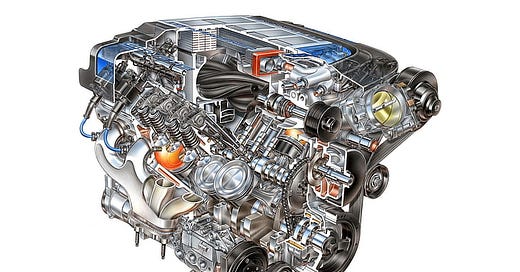



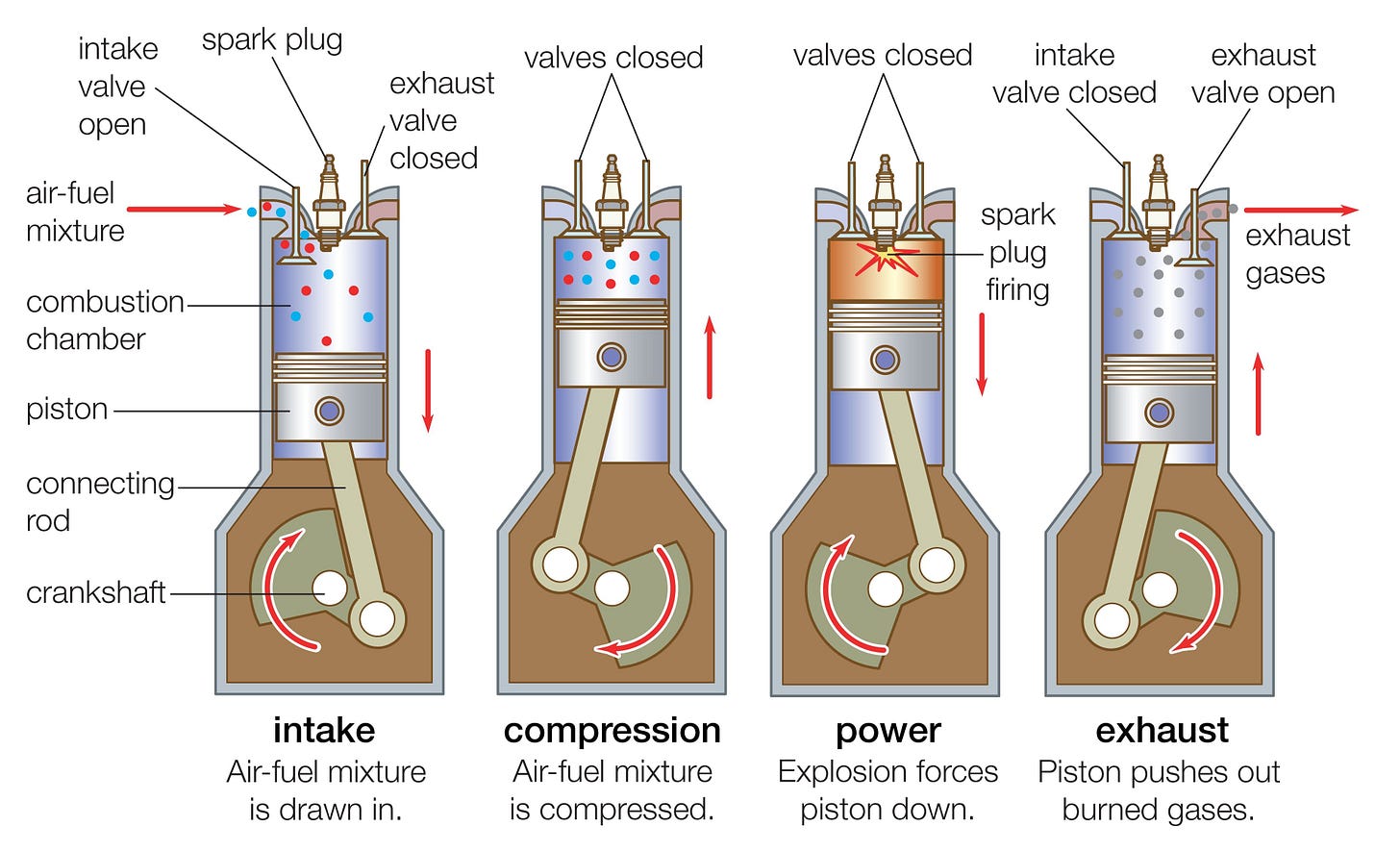

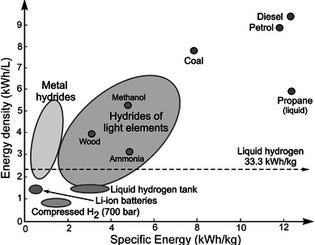
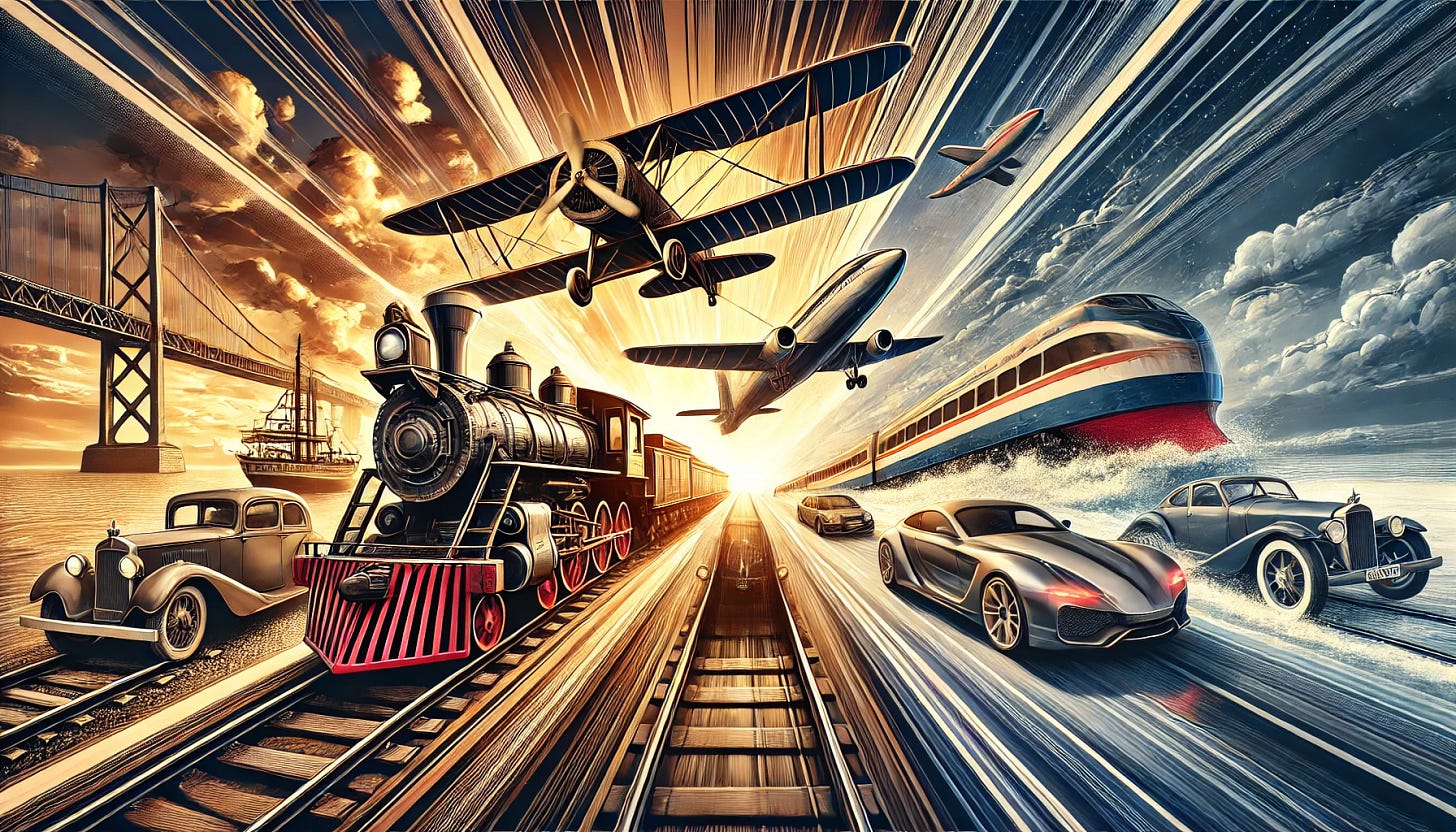



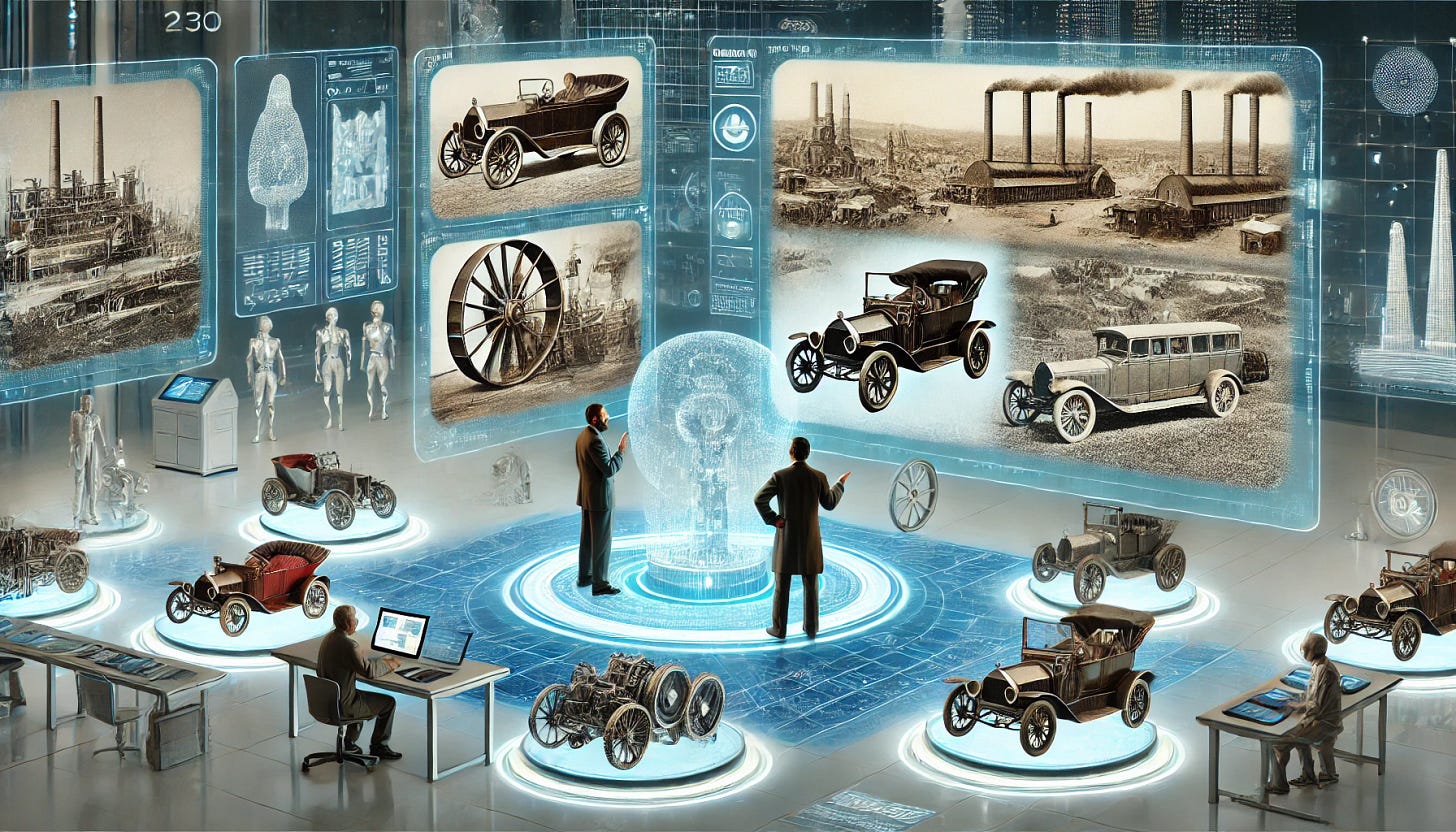
Brilliant, Brilliant piece. Loved it. ICE definitely takes the top honours on its impact on daily lives of people. The 26 near miss contenders was also an excellent compilation
Great piece Connor. The internal combustion engine was one of the defining innovations of the Second Industrial Revolution. As you illustrate, the fuel itself directly drove the engine (as opposed to heating a medium like water). This made them more efficient and energy dense.
You may also like my brief overview of engine technology here: https://www.lianeon.org/p/the-engines-of-progress